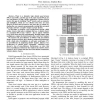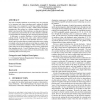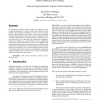15 search results - page 2 / 3 » When FPGAs are better at floating-point than microprocessors |
TVLSI
2010
13 years 13 days ago
2010
There is a dramatic logic density gap between FPGAs and ASICs, and this gap is the main reason FPGAs are not cost-effective in high volume applications. Modern FPGAs narrow this ga...
FPGA
2004
ACM
13 years 11 months ago
2004
ACM
FPGAs normally operate at whatever clock rate is appropriate for the loaded configuration. When FPGAs are used as computational devices in a larger system, however, it is better ...
ISCA
2009
IEEE
14 years 12 days ago
2009
IEEE
Tens and eventually hundreds of processing cores are projected to be integrated onto future microprocessors, making the global interconnect a key component to achieving scalable c...
MICRO
1994
IEEE
13 years 10 months ago
1994
IEEE
We examine two pipeline structures which are employed in commercial microprocessors. The first is the load-use interlock (LUI) pipeline, which employs an interlock to ensure corre...
ARVLSI
1997
IEEE
13 years 9 months ago
1997
IEEE
A microprocessor integrated with DRAM on the same die has the potential to improve system performance by reducing the memory latency and improving the memory bandwidth. However, a...



